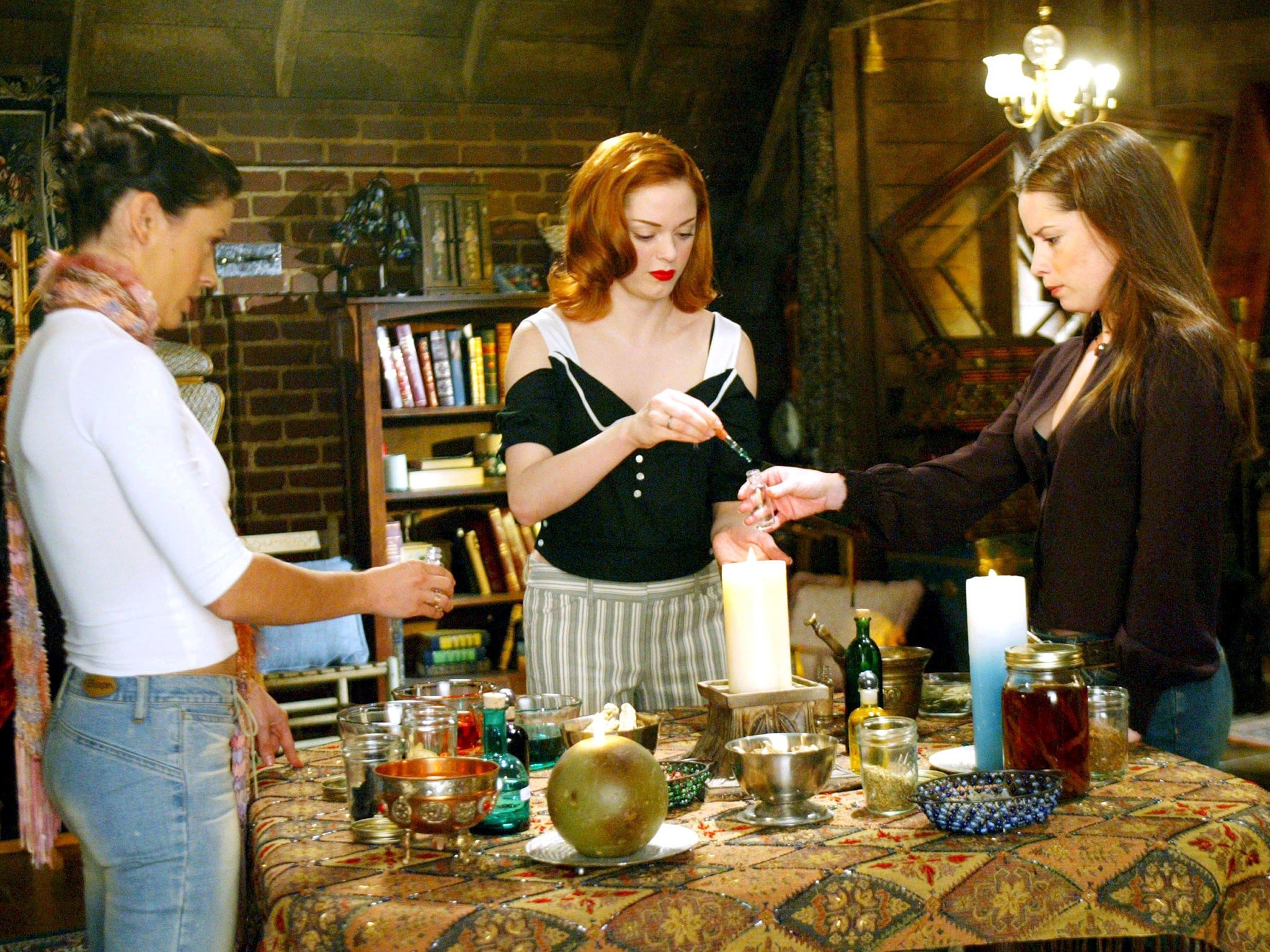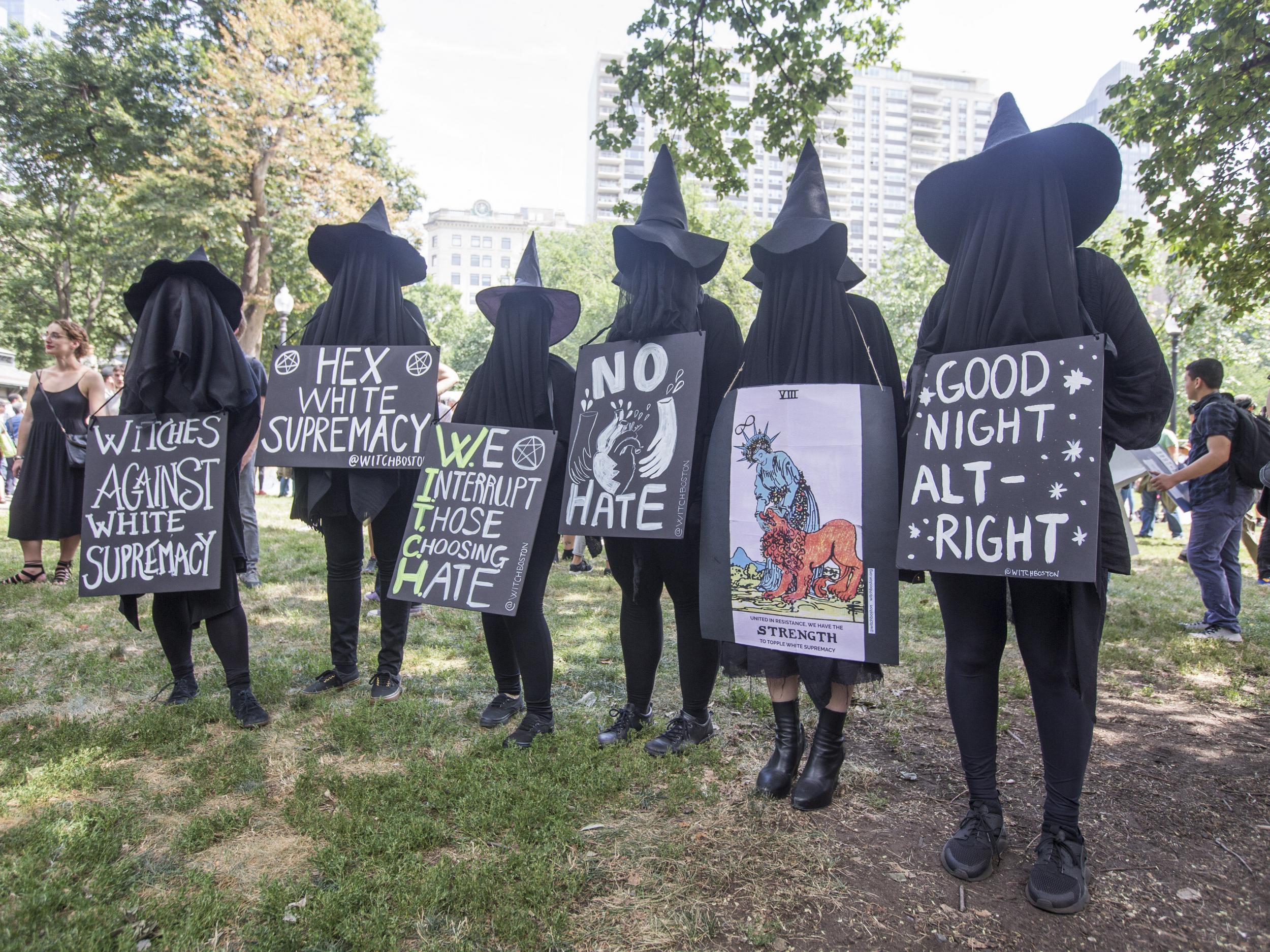Welcome to the season of the witch – and it’s not just for Halloween
They’ve been persecuted for centuries, but in the modern day, witches have come out of hiding, putting hexes on Wall Street and publishing self-help books, says Jessica Bennett

Your support helps us to tell the story
From reproductive rights to climate change to Big Tech, The Independent is on the ground when the story is developing. Whether it's investigating the financials of Elon Musk's pro-Trump PAC or producing our latest documentary, 'The A Word', which shines a light on the American women fighting for reproductive rights, we know how important it is to parse out the facts from the messaging.
At such a critical moment in US history, we need reporters on the ground. Your donation allows us to keep sending journalists to speak to both sides of the story.
The Independent is trusted by Americans across the entire political spectrum. And unlike many other quality news outlets, we choose not to lock Americans out of our reporting and analysis with paywalls. We believe quality journalism should be available to everyone, paid for by those who can afford it.
Your support makes all the difference.Fifty-one years ago, a group of protesters calling themselves W.I.T.C.H. staged a Halloween “hex” on Wall Street. Dressed in all black, with long peaked hats, the women sneaked through the narrow streets of downtown Manhattan late into the night, making their way to the entrance to the New York Stock Exchange, where they oozed glue into the latches of its doors. The next morning, the male bankers couldn’t get in – and the Dow reportedly fell 13 points.
“We didn’t consider ourselves real witches, but we used the moniker because of what it represented: a powerful woman,” said author Robin Morgan, one of the protest organisers, noting that the acronym – which stood for “Women’s International Terrorist Conspiracy From Hell” – probably wouldn’t go over so well today.
Today, there might be no need to sneak around. Real witches are roaming among us, and they’re seemingly everywhere. Haven’t you noticed? Witches are your millennial co-workers doing tarot card readings on their lunch breaks, and professional colleagues encouraging you to join them for a new moon ceremony aimed at “career success”. (This happened to me the other day.)
Witches are influencers who use the hashtag #witchesofinstagram to share horoscopes, spells and witchy memes, and they are anti-Trump resistance activists carrying signs that say “Hex the Patriarchy” (also the title of a new book of spells) and “We are the granddaughters of the witches you weren’t able to burn.”
Witches are panellists, they are podcasters, they are members of The Wing (which calls itself a “coven”), they are in-house residents at swanky Manhattan hotels, and some might say that one is even a presidential candidate, Marianne Williamson. (Alyssa Milano, of Charmed fame, recently fundraised for Williamson. Coincidence?). “I think everyone probably is the son or the daughter of a witch,” said Augusten Burroughs, the best-selling memoirist, whose new book, Toil & Trouble, tells the story of his own witchy coming out.
“‘Witch’ is a loaded word, but I do love it,” he said, noting that his husband thinks it needs some public relations help. “I mean, I didn’t choose to write this book. It just came. And that tells me that something has been unlocked. It’s time. It is the moment somehow for witches to come out – in all their vibrant diversity.”
I was brought up practising witchcraft – my mother was a witch – and even though it does have a lineage in my family, even recently, you couldn’t really say you were a witch
Indeed, this autumn, at least a dozen new witch books have or will hit the market – so many that Publishers Weekly has declared it “season of the witch”. The books span personal narrative, including that of Burroughs, as well as Initiated: Memoir of a Witch, by first-time author and practicing witch Amanda Yates Garcia. (She calls herself the “oracle of Los Angeles”.)

Some of the books are political, such as Lindy West’s The Witches Are Coming (based on a similarly titled New York Times column), which is not actually about witchcraft but misogyny in the #MeToo era. There is Modern Witchcraft, by Wiccan high priestess Deborah Blake, which argues for witchcraft as a female-focused religion, and Revolutionary Witchcraft, by Sarah Lyons, a guide to the history and practise of politically motivated magic.
There is fictional witchery in Hex Life, a collection of witch stories written by female fantasy authors, and also plenty of self-help. Bitchcraft: Simple Spells for Everyday Annoyances and Sweet Revenge is pretty much what it sounds like; Wild Witch: A Guide to Earth Magic focuses on magic through plants and herbs. And for those who feel they may need some basics in horticulture to make use of those spells, not to worry: There’s The Modern Witchcraft Guide to Magickal Herbs by Judy Ann Nock, founder of a goddess spirituality group, and The Witch’s Herbal Apothecary, by master herbalist Marysia Miernowska.
“I initially was nervous to publicly call myself a witch,” said Yates Garcia, who performs energetic healings and conducts magic workshops in Los Angeles. “I was brought up practising witchcraft – my mother was a witch – and even though it does have a lineage in my family, even recently, you couldn’t really say you were a witch.”
It’s time. It is the moment somehow for witches to come out – in all their vibrant diversity
And yet it seems the time has come to come out of the so-called broom closet. There is no perfect way of tracking witches in America, but we do know that Wicca – the religion that has its roots, at least partially, in 1950s England, with a retired civil servant named Gerald Gardner who once tried to hex Hitler – is more popular than ever, according to a number of studies. Not all witches are Wiccan (some are pagan), and not all Wiccans or pagans practice witchcraft, but you get the point.
Additionally, Americans of all ages and genders are more spiritual than ever: according to a 2017 survey from the Pew Research Centre that examined New Age beliefs, 60 per cent of Americans believe in one or more of the following: psychics, astrology, the presence of spiritual energy in inanimate objects (like mountains or trees) or reincarnation. More than a quarter of adults in the United States say they think of themselves as spiritual but not religious.
Perhaps it should come as no surprise that witchcraft is attracting people, particularly millennial women: interest in spirituality tends to increase in periods of upheaval, said Helen Berger, a sociologist at Brandeis University and author of Solitary Pagans: Contemporary Witches, Wiccans, and Others Who Practice Alone, which came out in August.
“We’re in a period of great transition; we’re all very aware of it. There’s an increase of globalisation, an enormous amount of polarisation, and for many of these young people, this spirituality is speaking to them,” she said. “It’s giving them autonomy.”
And, of course, witches have long been linked to women’s issues, which are front and centre in the present political moment “I often say, show me your witches and I’ll show you your feelings about women,” said Pam Grossman, author of Waking the Witch: Reflections on Women, Power and Magic and host of the Witch Wave podcast. “Witches reflect our fears and our fantasies about women with power.”
Indeed, many believe that midwives were persecuted for being witches. Women who liked sex were called witches. In the 2008 election, Hillary Clinton was called a witch. Women who proclaimed #MeToo were, as the president himself has put it, on a “witch hunt”.
There are less political forces at play as well: 1990s nostalgia in the form of leather chokers, Lilith Fair retrospectives (Lilith, before she was a symbol of female independence, was what you might call a witch) and reboots of TV shows like Bewitched and Sabrina the Teenage Witch and films like Practical Magic and The Craft.
For more than 40 years, W.I.T.C.H. has been more or less dormant. Yet over the last couple of years, Morgan said, she has received enquiries from young activists wanting to start their own groups. Two years ago, a group of witches in San Francisco hexed City Hall in favour of a “healthier future”; last October, a Brooklyn, New York, occult shop called Catland held a public ritual to hex Brett Kavanaugh, at the time a Supreme Court nominee. Who knows what this Halloween will hold.
“I think the same way some women took to wearing ‘Nasty Woman’ T-shirts after Trump used that label on Hillary Clinton, women have embraced the ‘witch’ label,” said Nell Scovell, a television writer who was the creator of ABC’s Sabrina the Teenage Witch and an executive producer on Charmed. “These days, so many women feel powerless that it’s fun to think about flinging Bill Barr into a wall with the flick of a finger.”
© New York Times
Join our commenting forum
Join thought-provoking conversations, follow other Independent readers and see their replies
Comments